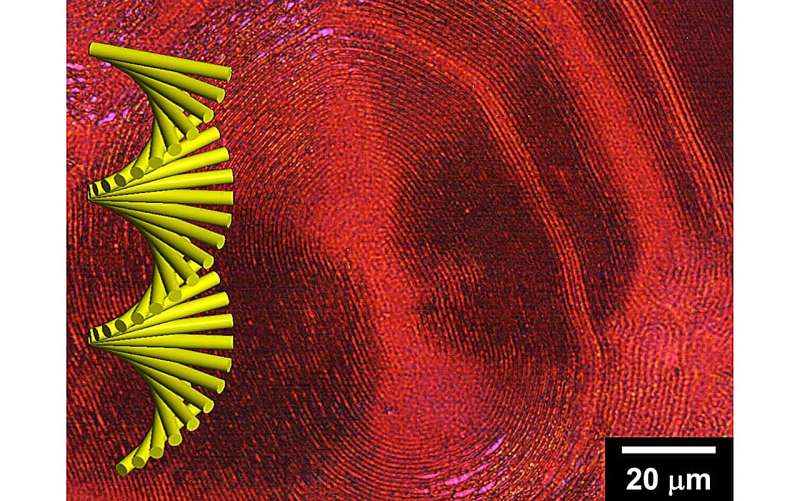This article has been reviewed according to Science X's editorial process and policies. Editors have highlighted the following attributes while ensuring the content's credibility:
fact-checked
peer-reviewed publication
trusted source
proofread
Successful synthesis of helical conductive polymers with circular polarization activity in response to magnetic fields

Researchers at University of Tsukuba have synthesized a helical, magnetically active conductive polymer with exceptionally high optical activity using cyclosporine A as a helix-inducing agent. This polymer exhibits distinct absorption of circularly polarized light, corresponding to the orientation of an applied magnetic field.
In the realm of semiconductors, spintronics—a technology that manipulates electronic devices by controlling electron spin within magnetic fields—has gained considerable attention for its potential application in communication technologies. Traditionally, research in this area has predominantly focused on inorganic magnetic materials; only a few studies have investigated organic electronics, particularly conductive polymers.
Drawing on extensive experience in topological magnetism dating back to the late 1990s, the University of Tsukuba research team has reported several innovative organic magnetic materials in the spintronics domain.
Building on this foundation, they have developed helical, magnetically active conductive polymers inspired by the medical application of cyclosporine A, a critical drug in transplantation and immunodeficiency treatment derived from natural fungi and known for its strong helical induction capability. The synthesized polymer, leveraging cyclosporine A's properties, is anticipated to possess a pronounced helical structure. Synchrotron radiation analysis confirmed this helical microstructure.
Furthermore, the polymer demonstrated electron spin activity and anisotropy in alignment with the magnetic field direction in the microwave region, alongside measurable circularly polarized electron spin resonance. These characteristics, unprecedented in organic polymers, mark a crucial advancement in the pursuit of polymer-based spintronics.
The research is published in The Journal of Physical Chemistry B.
More information: Kyoka Komaba et al, Optically Electroactive Polymer Synthesized in a Liquid Crystal with Cyclosporin A─Circularly Polarized Electron Spin Resonance, The Journal of Physical Chemistry B (2024). DOI: 10.1021/acs.jpcb.3c07375
Journal information: Journal of Physical Chemistry B
Provided by University of Tsukuba





















